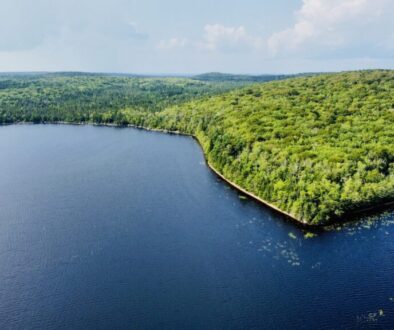CPAWS-NS welcomes Indigenous-led protected areas
K’JIPUKTUK – The Nova Scotia Chapter of the Canadian Parks and Wilderness Society (CPAWS-NS) welcomes today’s announcement by the Nova Scotia government that it has completed the protected area designations for Katewe’katik and Pu’tlaqne’katik.
“Katewe’katik and Pu’tlaqne’katik are places of great cultural and spiritual significance,” says Melissa Labrador, Indigenous Guardian. “These lands were traditionally inhabited by Mi’kmaq peoples for thousands of years. This is where they raised their families, gathered medicines, hunted and fished, and respectfully harvested the land’s gifts.”
CPAWS-NS worked with Melissa Labrador, Indigenous Guardian for the traditional territory of Kespukwitk, on the protection of Katewe’katik and Pu’tlaqne’katik. Together, we combined Indigenous knowledge and scientific knowledge, to recommend specific areas for protection.
“Conserving these unique habitats and geological features, and the rare and endangered flora and fauna, is an encouraging step forward,” says Labrador. “I am delighted that these lands are now protected and I look forward to working with the Nova Scotia government to ensure that they are managed using local Indigenous knowledge.”
The protected area designation means that these sites cannot be destroyed by industrial activities, such as clearcutting, road-building, open-pit mining, or development.
“Katewe’katik and Pu’tlaqne’katik are very special places for the Mi’kmaw people,” says Chris Miller, Executive Director for CPAWS-NS. “We are very glad that these lands are now protected. They are of high importance for conservation.”
CPAWS-NS encourages the Nova Scotia government to seek out other opportunities for establishing Indigenous protected areas and to set-up co-management for these very important sites.
“Indigenous led conservation is crucial for protecting natural landscapes, the land, and the water,” says Labrador. “But too often it is overlooked or ignored. In this case, we have a better conservation outcome for Katewe’katik and Pu’tlaqne’katik because Indigenous knowledge was central to the decision-making. We need more of that.”
In September 2019, the Nova Scotia government announced that they would protect public lands at Katewe’katik (McGowan Lake area) and Pu’tlaqne’katik (Pleasant River area). The announcement today is the completion of that process, with the protected area designations now officially in place.
Also announced at the same time as the Indigenous-led protected areas are the completion of several other protected areas in Nova Scotia, including St. Mary’s River Provincial Park in Guysborough and Pictou Counties. The St. Mary’s River is one of the longest rivers in the province and supports important populations of Atlantic salmon and wood turtles, as well as extensive old-growth Acadian forest.
“The protected area for the St. Mary’s River has been decades in the making,” says Miller. “It is an ecological gem that is deserving of protection. Congratulations to the local community and to the St. Mary’s River Association who have worked so hard to protect these lands.”
Not included in today’s announcement is “Archibald Lake Wilderness Area”. Despite being located in the St. Mary’s River watershed, the Nova Scotia government says “additional time is needed before making a decision on its protection”.
“We hope that the Nova Scotia government will use that extra time to make the protected area for Archibald Lake even larger,” says Miller.
Contact:
Chris Miller


